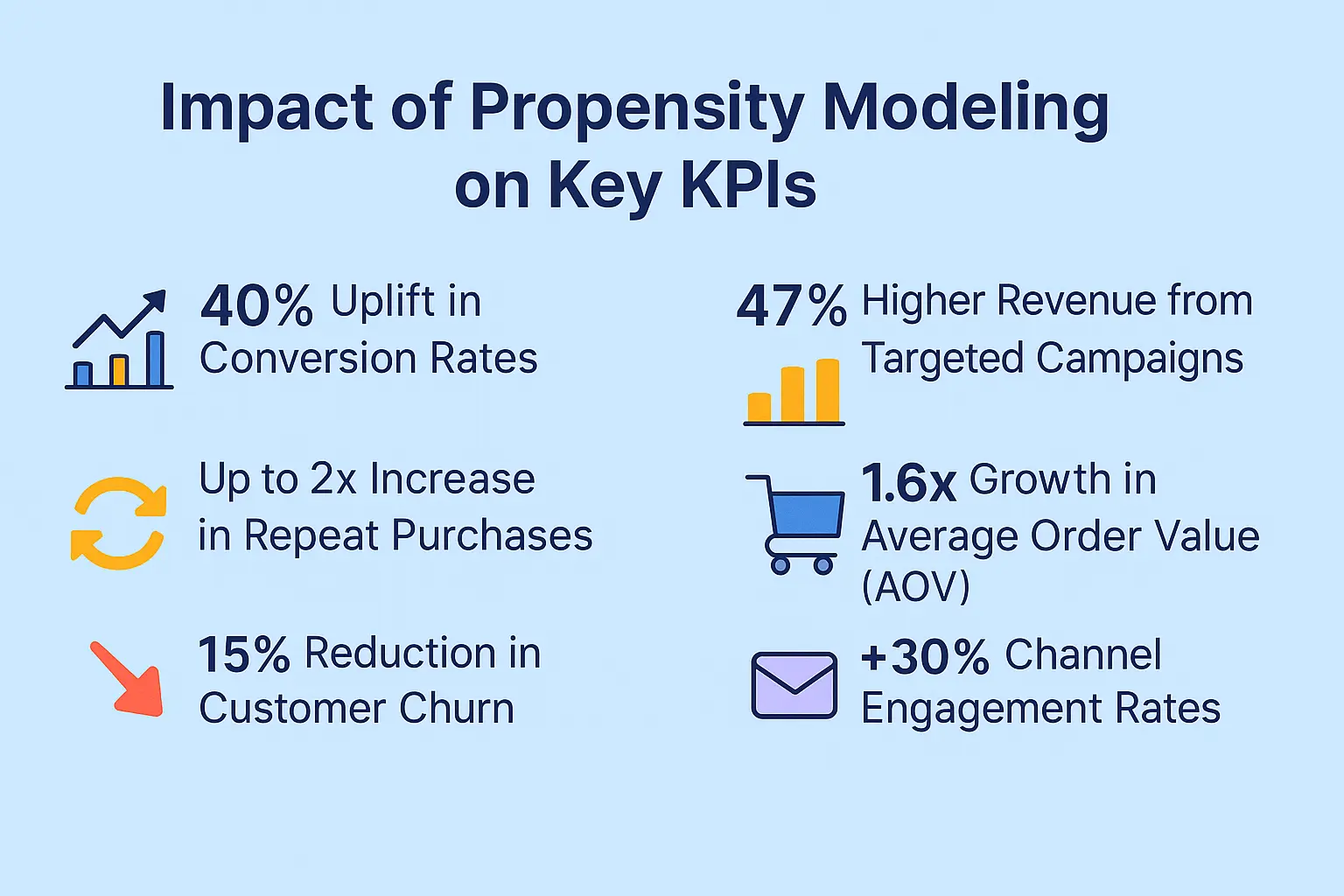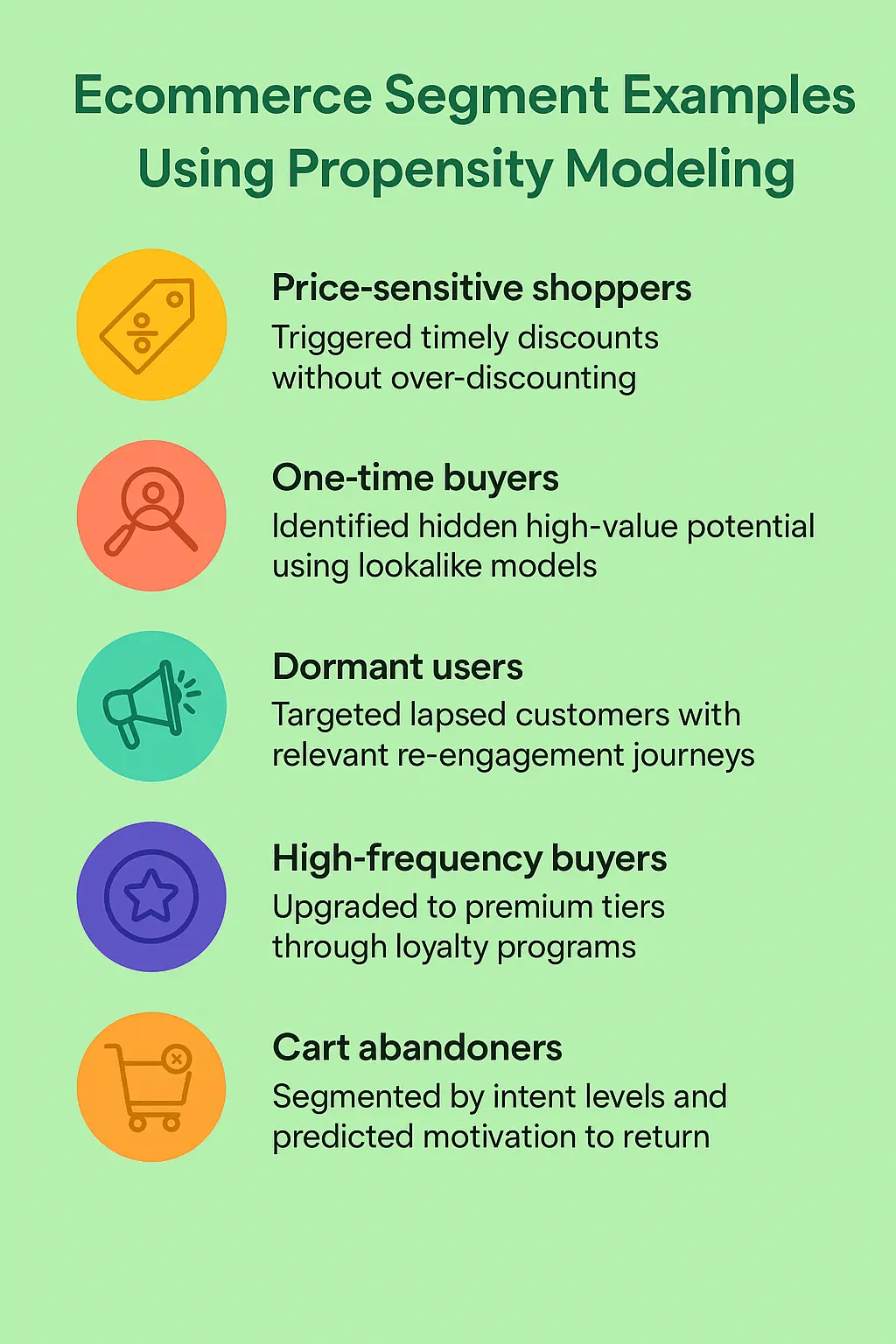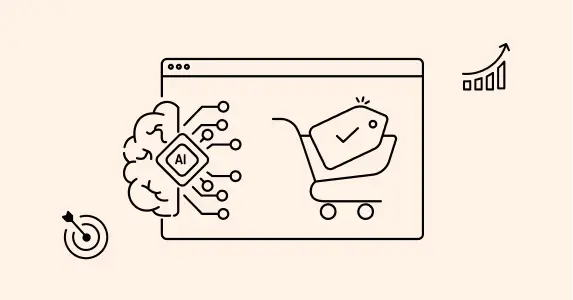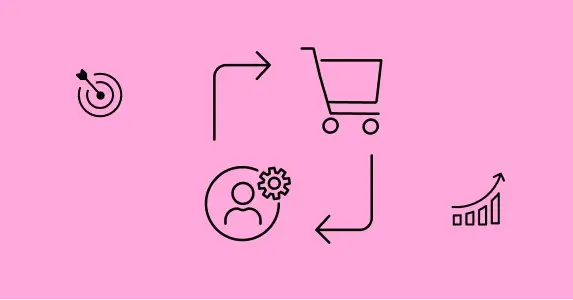Why Ecommerce Growth Now Depends on Intelligence, Not Just Volume
Last quarter, a fast fashion ecommerce clothing brand hit a wall.
Despite running influencer campaigns, flash sales, retargeting ads, and loyalty emails, growth began to plateau. Traffic was strong, but conversions were inconsistent. Cart abandonments spiked, repeat purchases dwindled, and customer engagement was frustratingly unpredictable.
The marketing team poured more into acquisition but struggled to answer critical questions: Why are shoppers dropping off? What do they expect? Why do so many leave after just one visit or purchase? Traditional tactics like pop-ups and generic offers weren’t enough. Without clarity on who was likely to convert—or why others were leaving—campaigns felt like guesswork.
That’s when the brand adopted Netcore’s Propensity Model—a game-changing layer of intelligence that transformed how they engaged customers.
With predictive insights built on behavioral data, the brand could now identify high-intent visitors, customers at risk of churn, discount-driven buyers, and those most likely to engage with a specific campaign or channel. This wasn’t just segmentation—it was 1:1 personalization at scale.
No wonder ecommerce leaders are buzzing about how propensity modeling supercharged their AOV and engagement. It’s the key to moving beyond guesswork and truly understanding what drives customer behavior.
The impact? 40% higher conversion rates, 47% more revenue from targeted campaigns, and 23x more efficient acquisition. By shifting from volume-driven tactics to intelligence-led engagement, the brand unlocked meaningful growth and long-term customer value.

Impact of propensity modeling on key business outcomes
What Is a Propensity Model and Why Should Ecommerce Brands Care?
A propensity model in ecommerce is a predictive algorithm that estimates the likelihood of a specific customer action—whether it’s making a purchase, abandoning a cart, clicking a message, or churning—based on behavior patterns and engagement history.
For fast fashion brands navigating narrow margins and high purchase volumes, this model is a transformational tool. Rather than relying on outdated demographic filters or assumptions, it uses data and machine learning to anticipate:
- Will this shopper buy today?
- Are they just browsing?
- Will they only respond to a discount?
These predictions help shape real-time, personalized journeys—boosting effectiveness and reducing wasted effort.
One leading fashion ecommerce brand implemented Netcore’s customer engagement platform—complete with AI-powered propensity modeling—and saw an immediate shift in how campaigns were executed and optimized. But they didn’t stop there.
By integrating Netcore’s propensity modeling, the fast fashion ecommerce brand began to predict not just who was likely to buy, but what they’d likely purchase and when. The platform used transaction history, basket contents, and on-site behavior to forecast timing and product interest, allowing marketers to act with precision and relevance.
How Propensity Modeling Works: A Modern Marketer’s Toolkit
A successful propensity model combines:
- Customer data: Purchases, visits, clicks, time spent, and channel interactions
- Behavioral signals: Recency, frequency, product affinity
- Machine learning algorithms: Patterns that even skilled marketers might overlook
Thanks to collaborative filtering, sequential recommendation algorithms, and time series analysis, the platform continuously learns and adapts—pinpointing when a customer is likely to convert again, and even what they may buy next.
Unlike static segments, real-time propensity modelling lets marketers engage while the shopper is active and receptive.
With Netcore, your Ecommerce platform evolves with your customers—no data science team is required.

Operational Wins: How Propensity Modeling Transformed Key Ecommerce Campaigns
The fast fashion ecommerce brand also integrated propensity modeling into day-to-day operations, across offer personalization, loyalty campaigns, and timing-based promotions—to deliver measurable campaign impact. Sharing some examples below:
1. Personalized Offers: Tailoring Promotions Based on Behavioral Shifts
By continuously tracking customer browsing patterns, favorite categories, and discount affinity, the brand used Netcore’s Propensity model to detect when a customer’s interest shifted from basics to trending collections.
Campaign Example:
A shopper who frequently bought casualwear suddenly started viewing statement pieces and occasion wear. The system flagged a shift in style preference, and within 24 hours, the customer received a personalized lookbook + 15% off their first premium collection item.
Result: 3.5x higher click-through rate and 2x conversion compared to standard newsletter offers.
2. Loyalty Programs: Smarter Rewards and Product Recommendations
With CLV predictions and purchase frequency data, the brand redesigned its loyalty tiers to incorporate intelligent rewards based on predicted future behavior.
Campaign Example:
Repeat customers predicted to have high future value received early access to the new season drop and were offered bundled discounts based on complementary product recommendations.
Result: 27% increase in loyalty redemptions and 1.6x boost in average cart size for program members.
3. Optimized Timing: Sending Offers When Customers Are Most Likely to Act
Using historical shopping time patterns and real-time engagement scores, the brand fine-tuned send times for high-propensity customers—maximizing message relevance.
Campaign Example:
One segment showed high purchase likelihood during late evenings. Instead of the usual noon email, the platform auto-triggered a 9 PM exclusive flash deal, resulting in a significant uplift.
Result: +22% open rate and +35% conversion uplift vs. control group.
These campaign strategies made possible through Netcore’s AI-powered engagement engine, underscore how intelligent timing and hyper-personalization—rooted in real customer behavior—can drive business outcomes far beyond static segmentation.
Global Fashion Brand ONLY Achieved a 107% Add-to-Cart Lift on PLP with Personalization
Core Business Outcomes Delivered by Propensity Modeling
1. Boosted Average Order Value (AOV)
By identifying high-propensity buyers, the brand was able to serve personalized upsell and cross-sell offers—such as pairing outfits with accessories or suggesting premium alternatives. These recommendations were guided by predicted preferences and next-purchase timing, not assumptions.
2. Increased Repeat Purchases & Lifetime Value
Churn risk was flagged early, triggering win-back campaigns and exclusive offers. Combined with Customer Lifetime Value (CLV) models, the brand focused retention strategies on high-yield customers, resulting in more frequent reorders and higher spend per user.
3. Improved Engagement Across Channels
The platform also predicted preferred communication channels—email, push, SMS, or WhatsApp—and automated delivery timing. Personalized messaging led to improved open and click-through rates, while reducing opt-outs and message fatigue.
Since implementing Netcore’s propensity modeling with NTP capabilities, the brand recorded:
- +40% increase in AOV through upsell/cross-sell targeting.
- Boosted CLV by reactivating high-value, at-risk customers.
- 15% reduction in churn, thanks to early intervention models.
- +30% lift in open and CTRs on personalized, channel-optimized campaigns.
- 47% increase in campaign ROI, from smarter targeting and timing.
Why Traditional Segmentation Isn’t Enough Anymore
Traditional segmentation methods—like filtering users by gender or recent purchase activity—often fail to capture the real motivations and behaviors behind customer actions. As a result, campaigns built on static rules lead to overcommunication, poor timing, and irrelevant offers that alienate rather than engage.
Today’s ecommerce consumers expect more. They want brands to understand when they’re ready to buy, what they’re interested in, and how they prefer to be approached. This is where propensity modeling transforms the game.
By using AI to predict each customer’s likelihood to take a specific action, marketers can shift from outdated grouping to “segment of one” targeting—personalizing every touchpoint based on real-time intent. This approach empowers ecommerce brands to send fewer but smarter messages, improve timing and relevance, and drive better business outcomes.
The results speak for themselves: lower customer acquisition cost (CAC), higher ROI, and personalization at scale—without increasing operational complexity.
What to Look For in a Customer Engagement Platform with Propensity Modeling
This resolution urges e-commerce brands to evaluate platforms with native machine learning and real-time propensity modeling to drive business growth. Leveraging models like propensity to purchase, churn likelihood, and upsell/cross-sell readiness, such as those offered by Netcore, is vital for optimizing the customer journey across Modified AIDA stages.
- Awareness & Interest: Identify and engage high-potential prospects with tailored initial interactions and personalized content based on predicted interests.
- Desire & Action: Cultivate intent and drive conversions through timely, relevant offers and interventions for those likely to buy or upsell, while proactively addressing churn risks.
- Retention: Foster loyalty and increase lifetime value by predicting future behavior and enabling continuous, personalized engagement.
Effective platforms must provide prebuilt propensity models, integrated journey orchestration, and omnichannel recommendations on an AI-powered customer engagement platform. Adopting such a platform enables brands to personalize interactions at scale, moving beyond broad segmentation to maximize customer value and achieve sustainable growth.
Conclusion: From Guesswork to Guaranteed Growth
Today’s ecommerce leaders are not just louder; they are smarter. Brands like Amazon, Myntra, and Flipkart have scaled successfully by leveraging propensity modeling to predict shopper behavior, personalize every touchpoint, and execute data-driven campaigns.
- Amazon generates over 35% of its sales through product recommendations powered by purchase propensity.
- Myntra segments shoppers by style preferences and price sensitivity to maximize engagement and profitability.
- Flipkart uses churn prediction models to retain at-risk users and increase customer lifetime value through timely, relevant outreach.
It’s no surprise why ecommerce leaders are buzzing about how propensity modeling supercharged their AOV and engagement. Their curiosity leads to one clear answer: propensity modeling isn’t just a promising concept—it’s the proven solution to unlocking smarter growth. By accurately predicting what each customer is likely to do next, and enabling real-time, personalized responses, it transforms guesswork into precision. For brands seeking sustained revenue growth and meaningful customer relationships, this is the strategy that turns insight into impact.
With Netcore’s AI-powered propensity modeling, your brand can adopt the same competitive advantage by moving from generic campaigns to intelligent, one-to-one experiences.
Unlock up to 40% more conversions, double your repeat purchases, and drive 47% more revenue through smarter targeting.
The platform is built for marketers, is easy to implement, and is fully integrated across channels.
Every delay is a missed opportunity. Book your personalized demo to gain a tailored strategy for higher ROI.
Book Your Demo Now.
 Holiday Sales Are Won Now — Grab the 2025 Holiday Marketing Guide to Unlock More Revenue.
Holiday Sales Are Won Now — Grab the 2025 Holiday Marketing Guide to Unlock More Revenue. 












